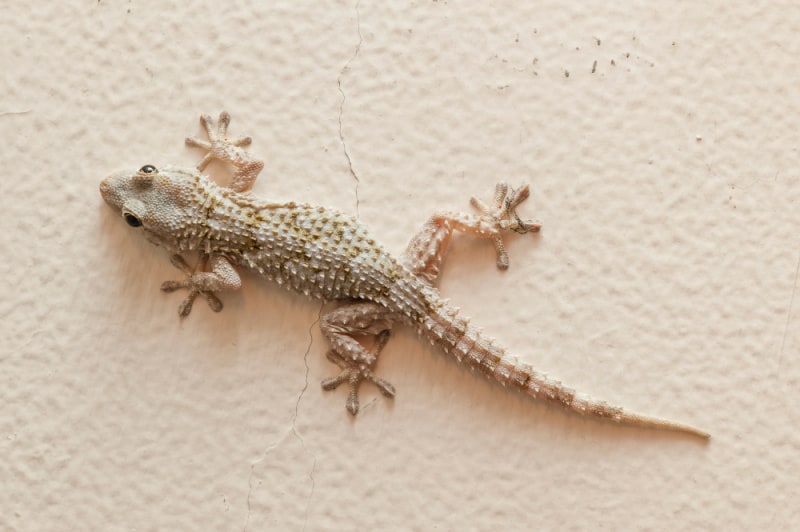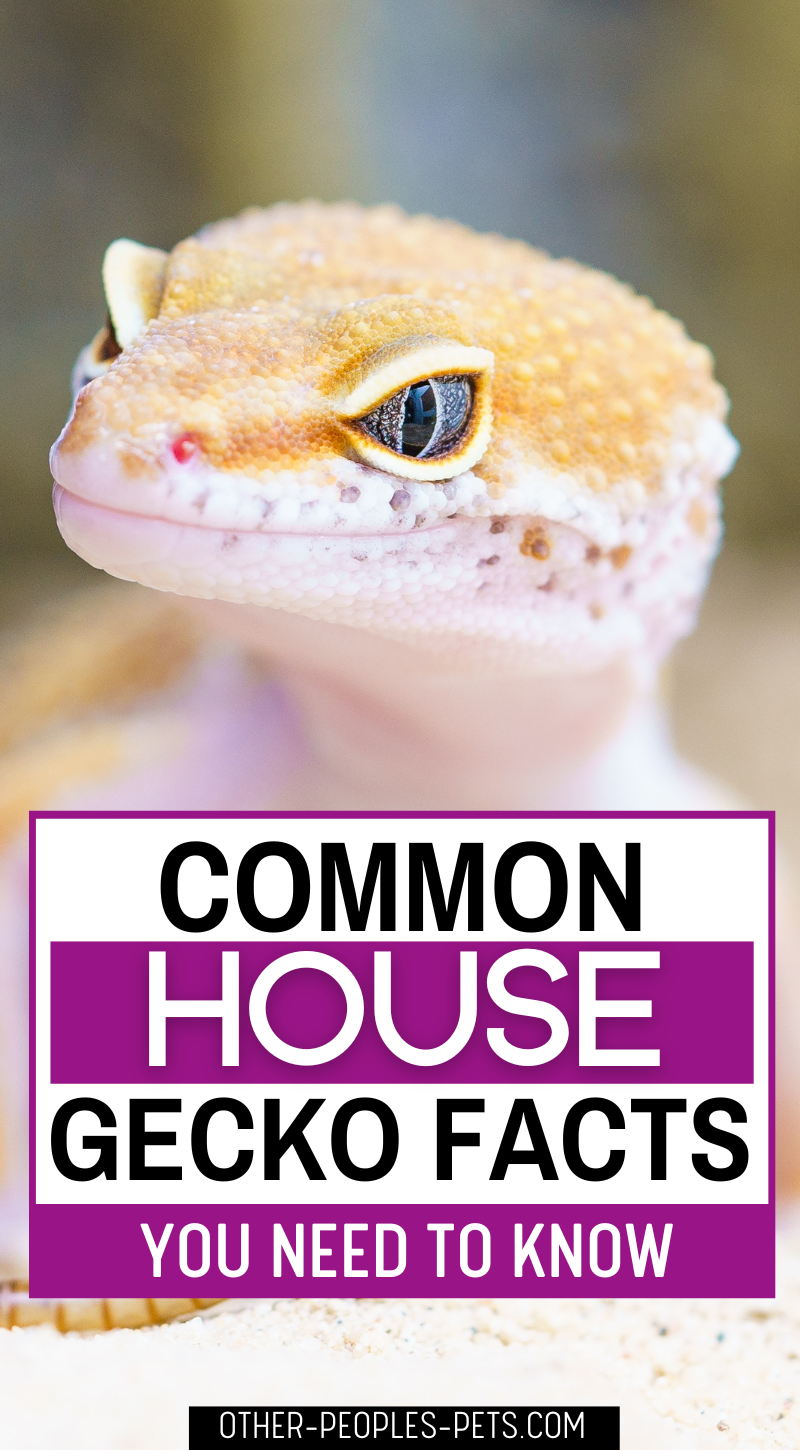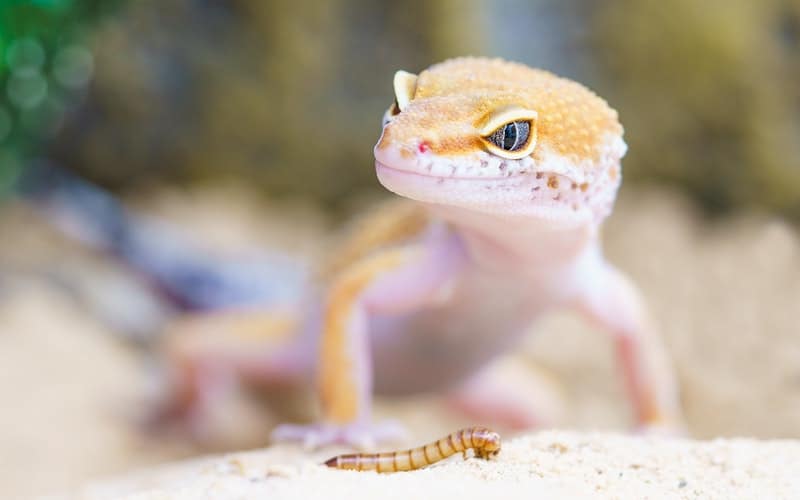Last Updated on April 20, 2023 by ellen
Check out these common house gecko facts and learn more about common house geckos and keeping them as pets.
Posts may be sponsored. This post contains affiliate links, which means I will make a commission at no extra cost to you should you click through and make a purchase. As an Amazon Associate I earn from qualifying purchases.

Table of Contents
Common House Gecko Facts
Have you ever seen a common house gecko? The common house gecko is also known as the Asian house gecko, Medittranean gecko, or Asian gecko.
These common house lizards are natives of the rain forests of south and southeast Asia and are often kept as a house lizard here in the USA.
You can commonly see them near porch lights or artificial lighting in urban areas waiting for the insects that are attracted to the light. Climbing walls lets them live in many urban environments.
Keep reading to learn more about geckos and learn some gecko fun facts.
What is a house gecko?
A tropical house gecko is a small to medium-sized lizard that has adapted to living near humans. The common house gecko is usually about 6-8 inches long from head to tail, but some can get up to 10 inches long.
Are house geckos nocturnal?
They are nocturnal creatures, meaning they sleep during the day and come out to hunt for food at night. Common household geckos are insectivores which means their diet consists mostly of insects.
House gecko sound
One of the things that makes house geckos so interesting is their ability to make a chirping sound by rubbing their ridged tails together. This sound is used to communicate with other geckos and can often be heard in the late evening hours.
House geckos are not venomous and are harmless to humans. They are also good climbers and can often be seen on walls or ceilings.
If you’re considering getting a common house gecko as a pet, you should know a few things first.

What does a common house gecko eat?
So, what do house geckos eat?
Geckos are a species that should have food in various types for its food supply. A cricket diet can be dominated by flies and smaller insects including silkworms, occasional mealworms, and insects.
How long can a gecko live in your house?
So, how long does a common house gecko live? What is the lifespan of the geckos living as pets? Unlike its cousin Mediterranean house gecko (Hemidactylus turcii), which lives for approximately eight years, the common gecko (Hemidactylus frenatus) lives in a home for only a couple of years.
A typical common house gecko lifespan is about two to three years.
How big do common house geckos get?
Common wall geckos can reach adult lengths between 3 inches (tall height). Its hues vary from yellowish tan to light to grey gray-white, and the colors are often darker during the night.

Does the common house gecko lay eggs?
Do house geckos lay eggs? Yes!
Females lay approximately two hard shelled eggs. The female common house gecko will deposit the eggs in a secluded and humid place, often beneath pieces of bark, leaves, or in other hidden locations.
For their eggs, you can also look under rotting logs and in humid areas. They typically mate from March to July in their native habitat. This may be different for gecko pets.
What do common house geckos look like?
As you can see in the pictures, common house geckos have a distinct and recognizable appearance. They are small lizards with large eyes and sticky toe pads that enable them to climb walls and ceilings with ease.
Most geckos are typically light brown.
Why do house lizards make sounds?
They do this to communicate discomfort or fear. Sounds may include low growls or squeals.

What are some cool facts about geckos?
1. Common geckos are found in warm climates all over the world.
2. They are nocturnal animals and are often seen running around houses at night.
3. House geckos eat insects and other small invertebrates.
4. Common house geckos measure between 6 and 8 inches long.
5. These lizards can live for up to 10 years in captivity.
6. House geckos are known for their ability to make a chirping sound by rubbing their tails together.
7. House geckos are not venomous and are harmless to humans.
8. These lizards are good climbers and often climb walls and ceilings.
9. Common house geckos make good pets but require proper care and housing.
10. Small geckos are often released into the wild where they can become a nuisance.
Is the Asian house gecko a threatened species?
The Asian house gecko is not currently a threatened species. However, they are considered to be an invasive species in many parts of the world including the United States.
This is because they have no natural predators and can quickly take over an area, crowding out native species. If you live in an area where there are native lizards, it’s best not to release your pet gecko into the wild.
This product presentation was made with AAWP plugin.
Caring for a pet common house gecko
If you’re thinking about getting a common house gecko as a pet, there are a few things you should know first. These lizards make great pets but require proper care and housing.
Here are some tips for caring for a pet gecko:
1. Provide a suitable habitat – A glass aquarium or terrarium with a screen top is ideal. The enclosure should be at least 10 gallons for one common house gecko. This terrarium is a great choice.
2. Keep the enclosure warm – Common house geckos require temperatures between 75 and 85 degrees Fahrenheit during the day. At night, the temperature can drop to 70 degrees.
3. Provide hiding places – House geckos like to hide so be sure to include plenty of hiding places in their enclosure.
4. Feed your gecko insects – Insects should make up the majority of your gecko’s diet. Crickets, roaches, and mealworms are all good options.
5. Dust the insects with calcium powder – This is important for your gecko’s health.
6. Give your gecko water – A shallow dish of water should be provided for your gecko to drink from.
7. Handle your gecko carefully – These lizards are delicate so be sure to handle them gently.
8. See a vet if your gecko is sick – If you think your gecko is sick, it’s best to take them to see a reptile vet.
Common health problems in house geckos
One of the most common health problems in house geckos is dehydration. These lizards can easily become dehydrated so it’s important to provide them with a shallow dish of water.
Another common health problem is metabolic bone disease. This can be caused by a lack of calcium in the diet. Be sure to dust insects with calcium powder before feeding them to your gecko.
If you think your house gecko is sick, it’s best to take them to see a reptile vet.
Preventing common health problems
The best way to prevent common health problems in house geckos is to provide them with proper care and housing.
Be sure to provide a suitable habitat, keep the enclosure warm, and include hiding places. Feed your gecko a diet of insects and dust them with calcium powder. Provide a shallow dish of water for your gecko to drink from.
Handle your gecko carefully and see a vet if you think they are sick.
Are common house geckos friendly?
They are very shy but with time and gentle handling, they will become more used to you.
Are geckos social?
They are fairly solitary in the wild but may live in a group with another male and females. You should not place more than one male in the same cage as they will fight. Your common house gecko pet will probably be happiest alone in his own cage.
House gecko sounds
Their normal noises include a very soft chirping sound.
Other gecko species that make good pets
There are many other species of geckos that make good pets. Some of the most popular pet geckos include leopard geckos, African Fat-tailed geckos, and Crested Geckos.
When choosing a pet gecko, it’s important to do your research to find a species that is right for you.
By following these tips, you can help keep your house gecko healthy and happy.
Related reading
- Keeping reptiles
- Easiest chameleon to care for
- Pet snail care
- Do snails hibernate?
- Best pets to keep in a tank

Ellen runs a small pet sitting business in southern Vermont. She has experience with a variety of small animals, dogs and cats. She has also cared for ducks, chickens and rabbits. Combined, she has over 20 years of experience in pet care and pet sitting.

